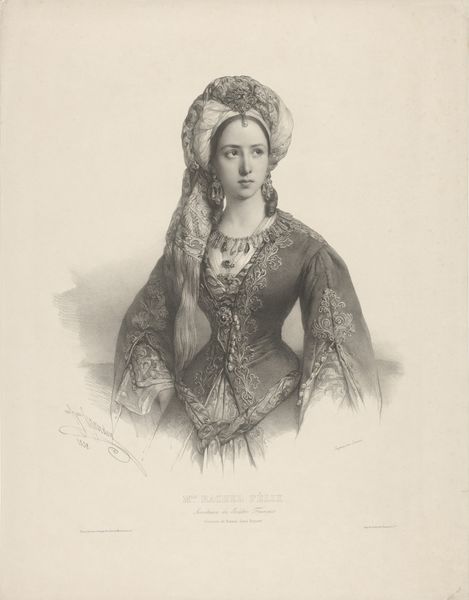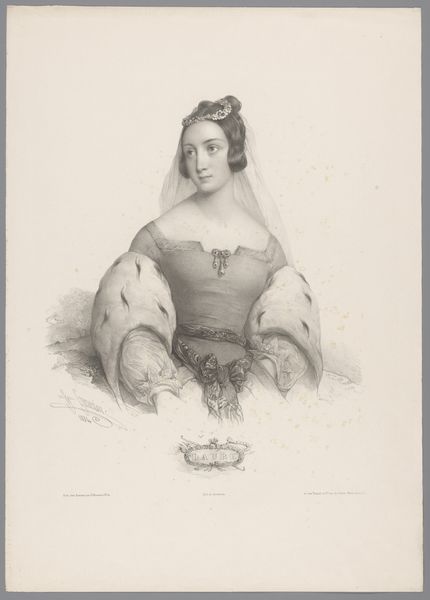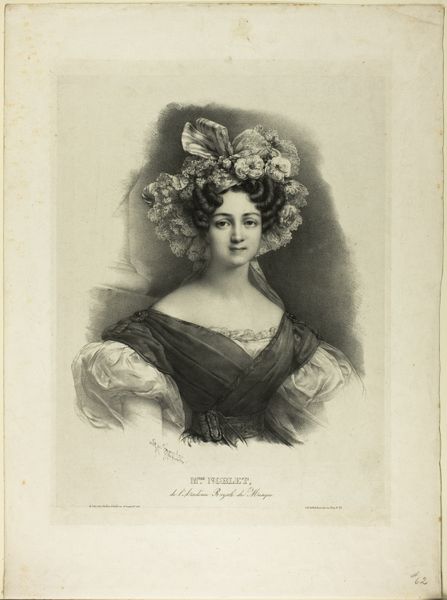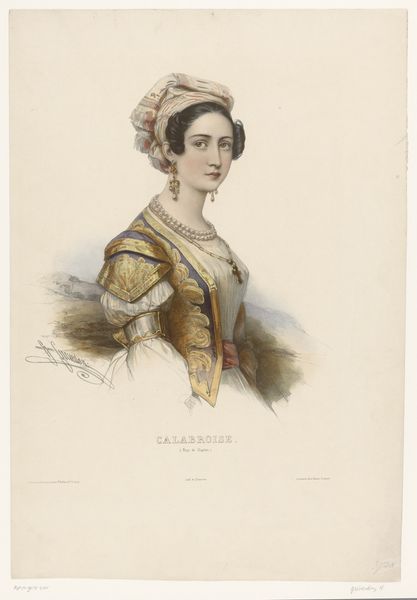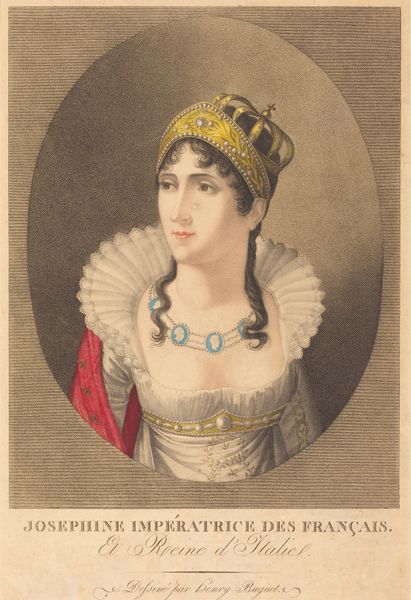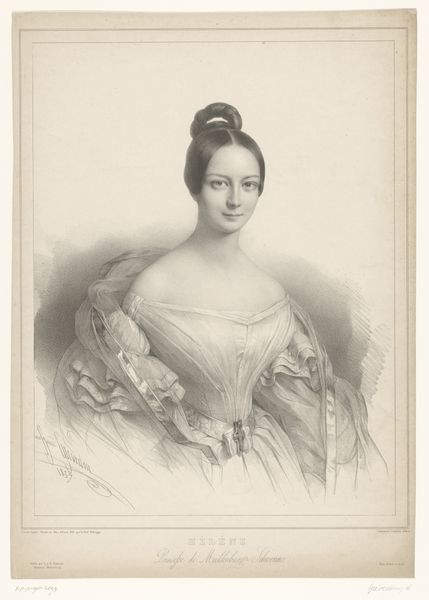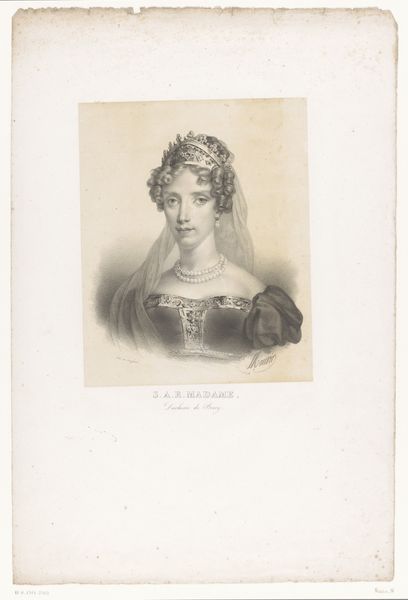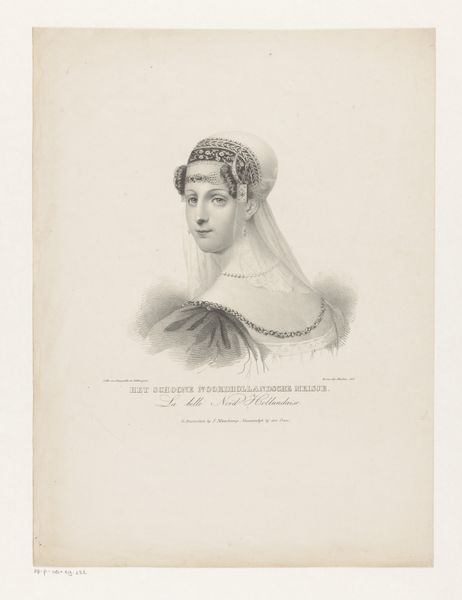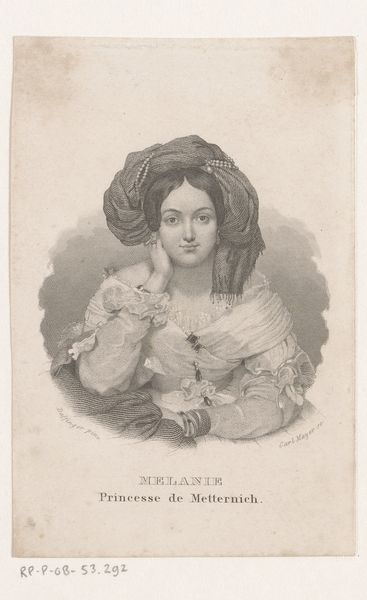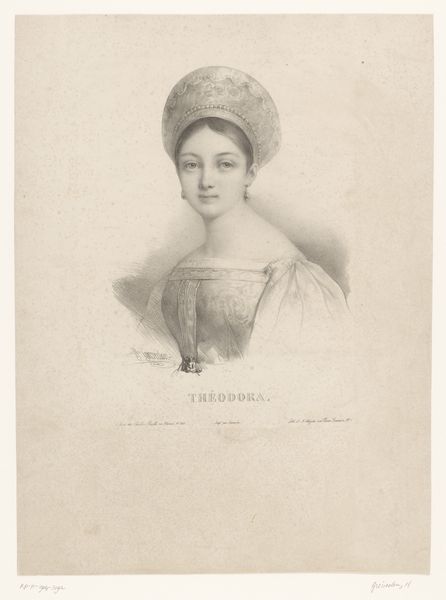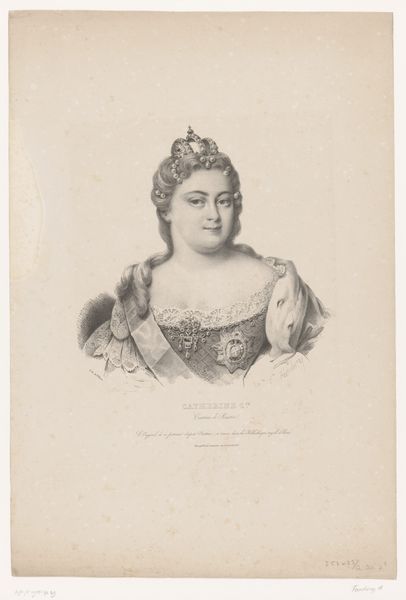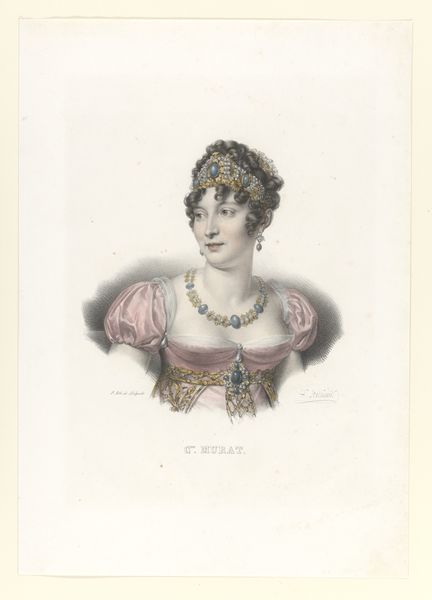
painting, watercolor
#
portrait
#
painting
#
watercolor
#
romanticism
#
genre-painting
#
watercolor
Dimensions: height 535 mm, width 368 mm
Copyright: Rijks Museum: Open Domain
Editor: Here we have Henri Grevedon’s “Vrouw in Spaanse dracht,” or “Woman in Spanish Dress,” created sometime after 1839. It’s a watercolor painting that strikes me as a fairly straightforward portrait, though the textures in her veil are interesting. What stands out to you about this piece? Curator: I'm drawn to consider the context of its creation. It’s watercolor, a relatively accessible medium at the time. How does the ease of production and dissemination through prints influence its reception and the message it conveys? It is, in essence, mass culture. Editor: That’s a great point. The ease of reproduction makes it available to a broader audience, changing the traditional dynamic between artist and patron, right? What about her attire; does that tie in? Curator: Absolutely. The ‘Spanish Dress’ becomes a signifier, perhaps of romanticism's fascination with other cultures, or even colonial power structures. Was it just a pretty costume, or a commentary on global trade and the availability of exotic materials? What kind of work might go into constructing such a garment? Who profited from its design, labor, and circulation? Editor: I hadn’t thought about that, the connection to production and who profits from the textile trade. It feels less like just a portrait now and more like a question about global economies. Curator: Exactly! Examining art through a materialist lens forces us to look beyond surface appearances and see the complex networks of labor, materials, and power that are embedded within seemingly simple objects. Editor: I’ll definitely look at art differently now, focusing on what it is made of and who was involved in its making.
Comments
No comments
Be the first to comment and join the conversation on the ultimate creative platform.
